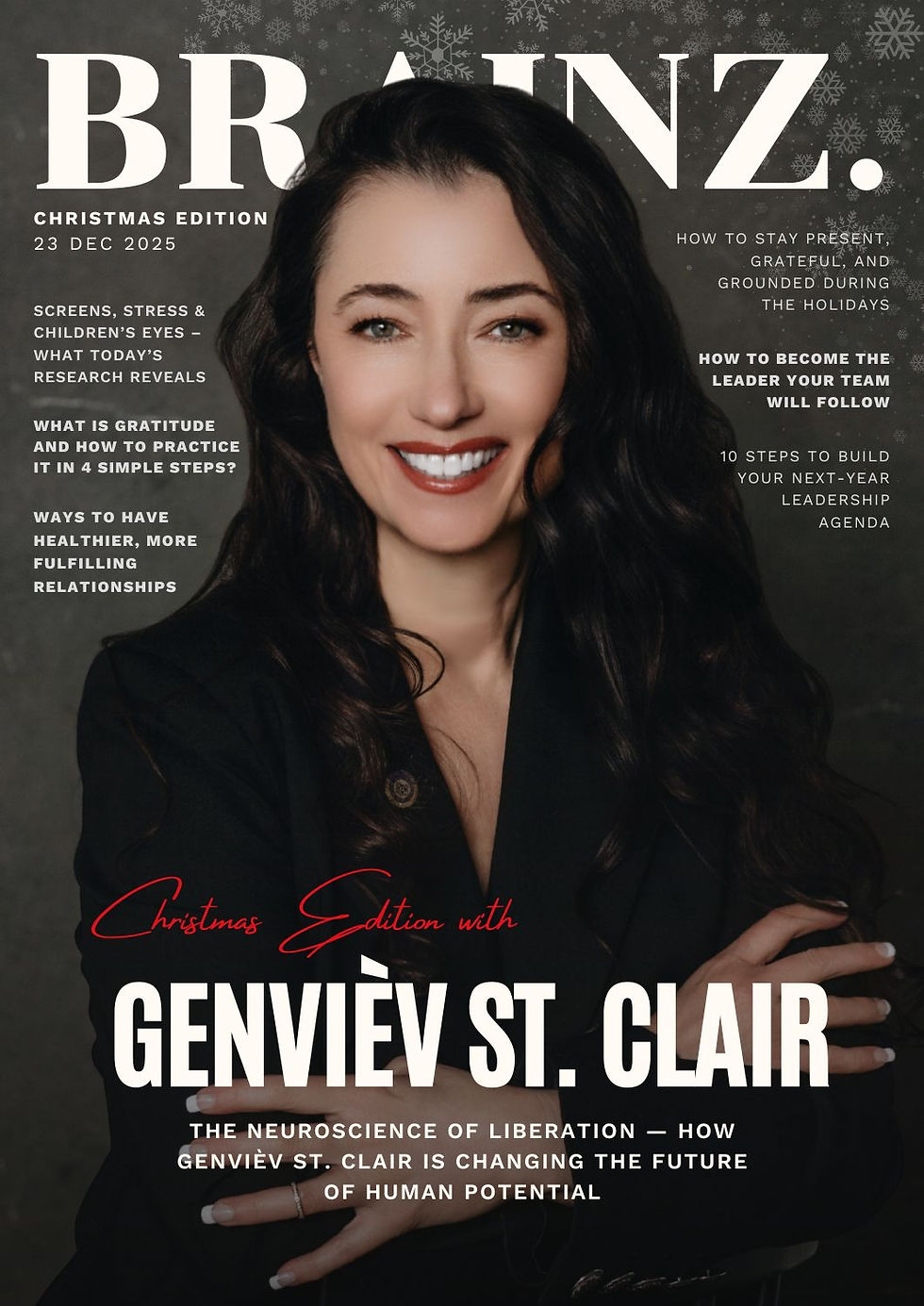Feeling Stuck? – A Different Take On How To Unstick Yourself
- Brainz Magazine

- Dec 9, 2024
- 5 min read
Written by Lucy Maeve, Transformational Coach
Lucy Maeve, a former J.P. Morgan salesperson turned trauma-informed coach, empowers high achievers to transform their stories from perpetual questioning of 'Is this it?' to living authentically meaningful lives. Featured in The Telegraph, The Times, and the BBC, her work resonates with those hungry for deeper meaning."

Have you ever felt like you were spinning your wheels, stuck in the same place despite your best efforts to move forward? Like whatever you do, there is a pervasive sense of being stuck, and yet when you try to describe what that actually means… it feels impossible.

I know that feeling too well—I lived there for years.
I bored many friends, hinge dates, colleagues, and well-meaning strangers with my stories of ‘stuckness’. I'm stuck in my work, my relationships, my day-to-day life, and most of all, my own head. It felt like I was in a constant loop, repeating the same sh** day after day- routine, routine, routine. I kept searching for an external solution— more Barry’s Bootcamp, more holidays, more big trips, more dates…anything to get my life feeling less restrictive than a straitjacket.
What I didn’t realize then was that the stuckness I felt actually had very little to do with my external world. It also had very little to do with my mind —it was physical. My body was stuck.
And before you ask… no, I didn’t need to just do some stretching.
My body was stuck because it was holding onto years of emotions, unspoken words, unexpressed anger, and pain squished into a teeny tiny box in the centre of my throat. My desperate desire to be seen as ‘good’, ‘high-achieving’, ‘having my sh** together’ and meeting all the self-imposed expectations I had on myself kept my body on lockdown.
Feeling stuck isn’t just a mindset thing; it’s a full-body experience
When we constantly suppress our feelings (like we all do) —whether it’s anger, sadness, or even joy(and oh wow, had I suppressed joy) —our bodies absorb the impact. Emotion is energy: fly back to year 7 physics, and you’ll remember that everything can’t be created or destroyed, just transformed. When we express emotions, the energy transforms into thermal energy (the heat of rage), kinetic energy (the jumping for joy), and sound energy (hello, sobs, and shouts). If we don’t express it, that energy lingers. It knots itself into the pits of our stomachs, tightens our chests, and freezes our joints.
Over time, this physical rigidity mirrors the emotional rigidity in our minds. We stop listening to our bodies as a source of wisdom because we've trained ourselves to ignore every signal they give us. Every muscle tenses as we hold it all in, trying to appear calm, composed, and "perfect" to the outside world.
But what if all that stuck energy—those unspoken words and stifled cries—are the very reasons life feels so damn stuck in life?
My turning point
For years, I thought people who talked about emotions and the body were coo-coo. Like, yeh yeh, you’re crying in yoga because you’re releasing sadness in your hips…sure. But one day, as I shuffled into pigeon pose at the end of a 12-hour workday, I didn’t feel tears coming, I felt rage bubbling from my hip joint.
As I started working with breathwork, there it was again… rage, grief, fear seeping out of my cells as I punched pillow after pillow and wiped snotty tears from my chin. The more I practised actually expressing emotion as my body wanted to and stopped intellectualising everything, the more free I started to feel.
How to begin reconnecting with your body
If you’ve got this far and are thinking, ok this woman is man, there is nothing stuck in my body - I see you, I was you. But stay with me - opening to this idea could be the difference between living a life of stagnation vs. feeling liberated and free. (I know which I’d choose)
Here’s what helped me (and may help you, too):
1. Conscious connected breathing
The way I describe connected breathing to my clients is that, if you imagine we have all these little deflated balloons of stuck emotional energy in our bodies, connected breathing starts to inflate them so that we can:
notice them
express them
2. Move freely
Spend 5 minutes every morning with a soft song (I love Michicant by Bon Iver for this), and just move your body intuitively. Let your arms sway, let your hips circle, gently open and close your chest and let yourself be inside of the sensations as you move. Once you get used to doing this, you can use this same practice to dance with your anger, your sadness, your fear (game changer)
3. Self inquire
When you notice a strong emotional response to something which, if we’re honest, isn’t a big deal - bring your awareness into the sensation of the emotion in your body. Then ask yourself:
What does this remind me of?
When was the first time I felt this way?
If this sensation could speak, what would it say?
I promise you’ll be surprised at the answers.
4. Make (and break) noise
This was one of the hardest yet most freeing practices for me. For so long, I had silenced my voice—literally and figuratively. It was breathwork that opened the possibility of a scream into a pillow for me. Wow, it felt good.
I screamed and screamed and screamed until the screams turned to sobs as years of pent-up emotion started to pour out of me. It wasn’t just therapeutic—it was liberating.
If screaming feels too intense, try humming, singing, or simply sighing deeply. The point is to release the tension from your throat and chest areas.
The path to liberation
Reconnecting with your body isn’t a one-time fix. It’s a daily commitment. And while it might feel uncomfortable at first, I promise you this: Each step you take brings you closer to liberation.
That stuck feeling? It’s not forever. It’s your body’s way of calling you home—to release, to feel, to live fully.
Read more from Lucy Maeve
Lucy Maeve, Transformational Coach
Lucy Maeve is a trailblazer in empowering high achievers to rewrite their narratives and embrace authentic living.
Drawing from her own journey away from a successful finance career, Lucy incorporates insights from trauma-informed practices and breathwork inspired by mentors such as Gabor Mate and Layla Martin. Her expertise, featured in The Telegraph, The Times, and the BBC, helps clients rediscover their true selves.
Based in Cape Town, Lucy's passions include (bad) dancing, ocean waves, and indulging in Lindt Orange Intense chocolate, all while striving to ensure no soul is left uninspired.










.jpg)